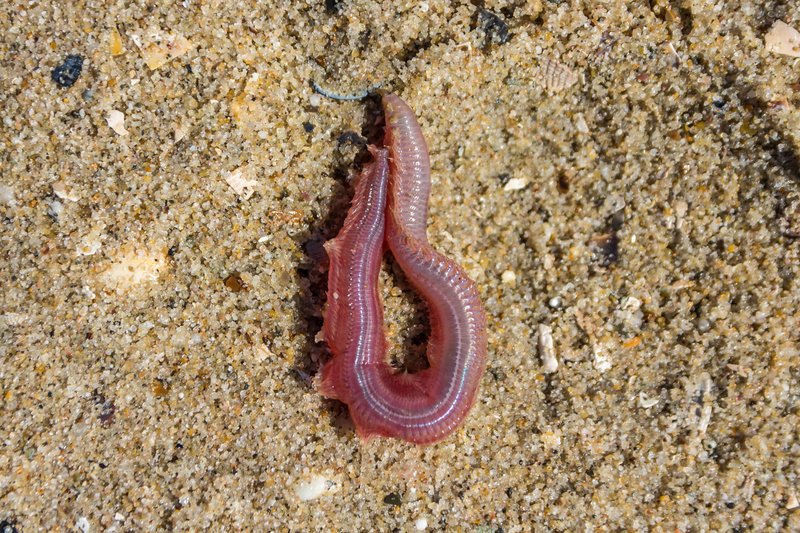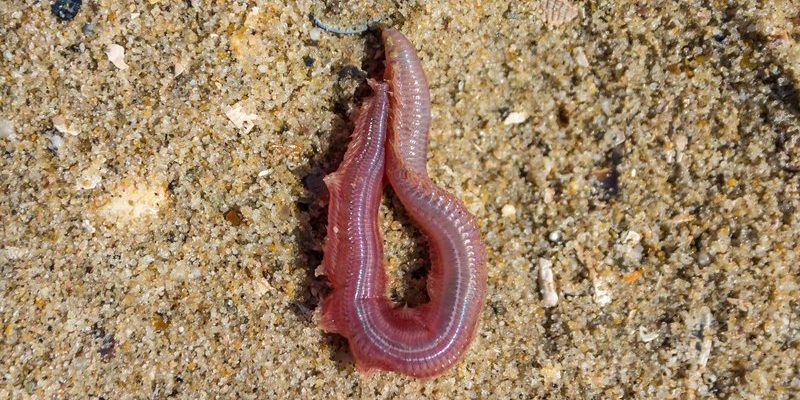
Bloodworms, scientifically known as Glycera dibranchiate, are the larval stage of marine worms, particularly the species within the family Glyceridae. These little guys can be found in various damp environments, primarily in muddy or sandy sediments of freshwater and coastal areas. Identifying them in their natural habitat can open up a whole new appreciation for these fascinating creatures. So grab your curiosity, and let’s dive into what makes bloodworms so unique and how to spot them!
What Do Bloodworms Look Like?
Understanding what bloodworms look like is the first step to identifying them. Bloodworms are often recognized by their vivid red color, which comes from their high levels of hemoglobin. This striking pigment isn’t just for show; it helps them thrive in low-oxygen environments, like muddy bottoms of rivers and lakes.
The adult version of bloodworms can range in size from a couple of inches to about ten inches long. They have a long, segmented body, and you’ll notice that they have a distinct head with two prominent antennae. When you spot them, they might be wriggling around in the sediment, and if you’re lucky, you’ll see them emerge from the mud.
Here’s what to keep in mind when identifying them:
- Color: Bright red to reddish-brown.
- Body shape: Long, segmented, and often wriggly.
- Size: Can grow from 2 to 10 inches in length.
- Head features: Two noticeable antennae at the front.
Getting familiar with these characteristics can make your search much more efficient.
Where to Find Bloodworms
So, where can you go to find these little wrigglers? Bloodworms tend to prefer environments that offer a nice mix of water and mud. Think of places like marshes, estuaries, and riverbanks with plenty of silt and organic material. They often burrow into the sediment, making them a bit tricky to spot at first glance.
Some excellent spots to check out include:
- Shallow waters: Look for them in rivers, lakes, and ponds with a muddy bottom.
- Estuaries: These areas are rich in nutrients and are ideal for bloodworms.
- Marshy areas: Wetlands have the right mix of water and soil for bloodworms to thrive.
When searching for bloodworms, it’s best to carefully sift through the sediment. Use a small trowel or your hands, but make sure to be gentle as you disturb the mud. Bloodworms are sensitive to changes in their environment, and a bit of patience goes a long way!
Understanding Their Habitat
Bloodworms thrive in specific conditions that provide them with the nutrients and environment they need to survive. They usually inhabit anaerobic mud, which means there’s little to no oxygen in the water. This can be surprising, given that most creatures prefer oxygen-rich environments. Yet, bloodworms have adapted effectively to these conditions.
Another important aspect of their habitat is the organic matter available in the mud. Bloodworms feed on detritus—decaying plant and animal material. This nutrient-rich diet helps them grow and thrive, turning them into vital players in the ecosystem by breaking down organic matter and cycling nutrients back into the environment.
You might wonder how this habitat impacts their behavior. Well, when they feel threatened, bloodworms can retreat deeper into the muck, helping them avoid predators. Knowing this can help you strategize your search, sticking to areas where the sediment seems disturbed, as that often signals their presence.
Tips for Spotting Bloodworms
Finding bloodworms requires a bit of strategy, but with the right approach, you can increase your chances of success. Here are some handy tips to consider while you’re out exploring:
1. Choose the Right Time: Early morning or late afternoon is often the best time to search for bloodworms. Lower light conditions can help you catch them in action without startling them away.
2. Look for Movements: If you watch closely, you might see the telltale wriggling in the mud. Sometimes, they’ll even create small holes or “bubbles” in the sediment, which can guide you to their hiding spots.
3. Use a Scoop: If you’ve got a net or a small scoop, it can be incredibly helpful for sifting through the mud without accidentally damaging these delicate creatures.
4. Be Patient and Observant: Bloodworms can be timid. If you disturb the mud too much, they’ll retreat into their burrows. Take your time, move slowly, and keep your eyes peeled.
Using these tips can turn your search into a rewarding experience, not just for spotting bloodworms but also for connecting with nature.
Why Bloodworms Matter
You might be curious why it’s important to learn about bloodworms in the first place. Besides being fascinating creatures, they play a crucial role in the ecosystem. Bloodworms help break down organic matter, recycling nutrients back into the ecosystem and providing food for a variety of wildlife, including fish and birds.
In addition, they are often used as live bait in fishing due to their attractiveness to many fish species. This makes them a vital part of recreational fishing and local economies.
Understanding bloodworms and their habitats can also serve as a reminder of the complexity of nature. By knowing what to look for and how to appreciate these often-overlooked creatures, you can develop a deeper connection to your local environment.
Final Thoughts on Bloodworm Identification
Identifying bloodworms in their natural habitat can be a fascinating and rewarding experience. With a little patience and the right approach, you can not only spot these unique creatures but also gain a richer appreciation for the ecosystems they inhabit.
Whether you’re a curious nature enthusiast or simply looking to learn more about the critters in your local waters, knowing how to identify bloodworms is a great step. So, the next time you venture near a riverbank or marsh, keep an eye out for these little red wonders and enjoy the intricate beauty of nature at work!

